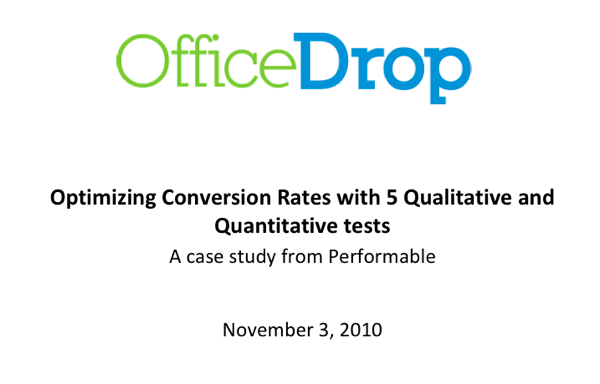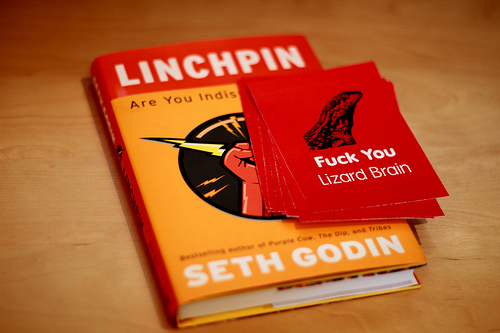Nov 5, 2010
Whitepaper on Optimizing Conversion using 5 Quantitative and Qualitative tests
My 3-part series of posts on the Performable Blog is also now available a handy white-paper at the performable.com . Part 3

[](http://blog.performable.com/optimizing-conversion-rates-with-5-simple-qualitative-quantitative-tests-%e2%80%93-part-3/) (summary of all the key lessons learned) itself makes it worth the download. Lesson such as Always be testing and don’t get stuck in those local maximas.
Download the whitepaper now.
Nov 4, 2010
The New Laziness - Via Seth (God)in
Oh man, why is he always right :-)
the new laziness has nothing to do with physical labor and everything to do with fear. If you’re not going to make those sales calls or invent that innovation or push that insight, you’re not avoiding it because you need physical rest. You’re hiding out because you’re afraid of expending emotional labor.
http://sethgodin.typepad.com/seths_blog/2010/11/laziness.html
Oct 15, 2010
3-part series on Qualitative and Quantitative tests to improve conversion
Of the different hats I wear at OfficeDrop, one that I especially relish is in our website design, messaging and poring through funnels (second only to “getting out of the building”). It combines various areas that I am passionate about, including web design, data geeking, copywriting and video editing.
I am thrilled that I am writing a 3-part series on Optimizing conversion rates using Qualitative and Quantitative Tests at the Performable blog . What makes this even awesome-r for me, is that the company was co-founded by David Cancel, one of the rockstars in the Boston Entrepreneurial scene. I have learned a lot of my ghettopreneur habits (such as Fake it before you make it) by attending David’s talks in the area (including my personal favorite on Data Driven Startups at a recent LeanStartups meetup). We learned a lot of valuable lessons in the process of re-designing and re-branding OfficeDrop and I am glad to have the opportunity to share it with the community.
There was a lot of great content, and some posts are pretty detailed and lengthy. Be sure to read them all, I promise it will be worth it. Special Thanks to Healy Jones for his editorial inputs.
Read Part 1 of this series
Oct 12, 2010
10 Things Product Managers Need to Know About Design
Here is an awesome presentation on what you ought to know Product Design, by Jason Putorti. My personal favorites are :
-
Talk benefits, not features
-
Think in flows, not screens
-
Dont make the user think
Enjoy! (Hat tip to @davemcclure (no pun intended !! )
10 Things CEOs Need to Know About Design
Aug 26, 2010
Practice does make you perfect - How to be good at anything
As a follow-up from themes on books such as Outliers, Tony Schwartz talk about the Six keys to be excellent at anything. While there are some more obvious ones, (such as Pursue what you love, Practice Intensely etc,.), there are also some not-so-obvious ones (Take regular renewal breaks, Seek Expert feedback, but only in intermittent doses). As the article notes, it is really empowering to note that the biggest factor in determining how good we become at something is how hard we are willing to work, and not inherited talent.

I happen to agree especially with the 6th tip (Ritualize Practice). The premise is that the best way to insure you’ll take on difficult tasks is to ritualize them. I have found a lot of success with this, be it at a personal level for doing my Weekly GTD Review, or at a professional level for coming up with a consistent dedicated time every week to reach out to users and making a habit out of listening to them.
I also found some interesting nuggets of information, such as :
* 90 minutes is the maximum amount of time we can bring the highest level of focus to any given activity
* Great performers practice no more than 4 1/2 hours per day.
* An interesting quote from Aristotle : We are what we repeatedly do.
Overall, an interesting read.
Picture via Flickr from skOre_de

